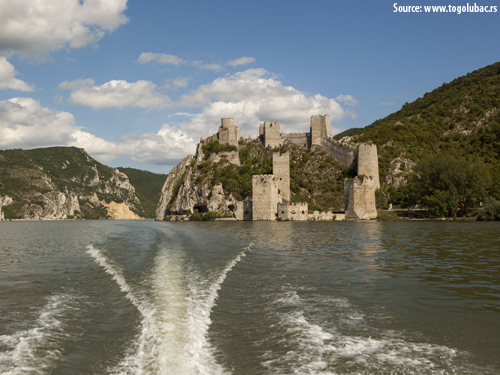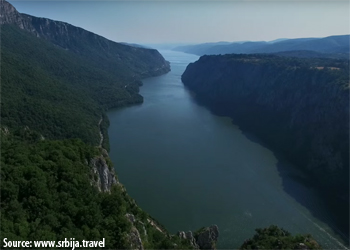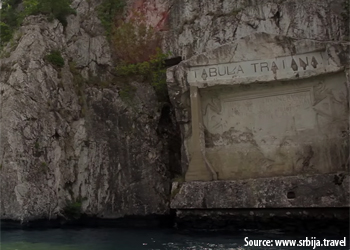

The Danube is the most important European river and comprises Pan-European transport corridor VII. It is an integral part of the Rhine-Main-Danube system, whose 3,505 km of waterways connect the Atlantic to the Black Sea, Western Europe to Eastern Europe. There is no river in the world that runs through more countries than the Danube. More than hundred million people live on or near the river, and more than 20 languages are spoken. These facts are probably the main reason for the Danube to be one of the historically most important sites in the world - the place which has always inspired people to develop and grow, to create and enjoy the beauty, but at the same time, to conquer and defend, to sail and to come back
The Danube has a long history as an important international waterway. For a long time it formed the northeastern boundary of the Roman Empire. Today it flows through or forms the border of ten countries: Germany, Austria, Slovakia, Hungary, Croatia, Serbia, Romania, Bulgaria, Moldova and Ukraine. With a 2,783 km course it is the second-longest European river (after the 3,692 km-long Volga), and the 27th largest in the world
Along its 588 km course through Serbia, the Danube extends from the meeting of the Serbian, Hungarian and Croatian borders to its confluence with the Timok where the borders of Serbia, Bulgaria and Romania meet. It passes through the picturesque Vojvodina flatlands and the national parks of the Fruška Gora and Đerdap. Besides its natural wealth, there are many sites of cultural and historical value spread out along its banks.
The Danube is the most popular river in the world for river cruises, and is a major asset of Serbia’s tourism industry, with Serbia’s two largest urban centres – Belgrade and Novi Sad – located on its banks.
The nature along the Danube changes from hills and wild canyons to flat land. Forests, fields and many river coasts are living space for many animals and plants. Many of the pretty landscapes are verified as National parks and Nature reserves.

The Iron Gates is the area located in the middle of the Danube course, where the river separates Carpatian Mountains on the Romanian side, and the Balkan Mountains on the Serbian side of the river. The water carved its passage through the mountains, forming the largest gorge in Europe and, at the same time, one of the most scenic parts of the Danube landscapes. It is a destination with spectacular landscapes, diversity of flora and fauna, and a large number of cultural and historical sites dating back from the Neolithic period, Roman Empire and medieval times. The area, which spreads 100 km along the Danube course, is under protection, as The National Park Djerdap.
At the top of the first gorge, there is medieval fortress Golubac. Lepenski vir, one of the most important archeological sites in Southeastern Europe, was excavated in the 1960's, proving that the banks of the Danube were inhabited in Neolithic era.
Lower parts of Fruska gora are covered with pastures and fertile fields, vineyards and orchards. The most significant are 16 orthodox monasteries, mostly built in the XV and XVI century
One of the most attractive destinations is Petrovaradin fortress - built by the Austrians during XVIII century, it is the second biggest fortress in Europe. Petrovaradin is a venue of famous EXIT music festival, attended by more than 100 thousand visitors every year. Just across Petrovaradin, on the left bank of the Danube, lies Novi Sad, second biggest town in Serbia. Sremski Karlovci, a charming baroque town on the slopes of Fruska Gora also played an important role in national history. The Roman Emperors and Danube Wine Route spreads through four countries of the Middle and Lower Danube Region – Croatia, Serbia, Bulgaria and Romania – encompassing 20 archaeologic sites and 12 wine regions. The Route is certified as a European cultural route by the European Institute for Cultural Routes (EICR).

At the prestigious film competition within the Tourism Fair ITB in Berlin, Tourist Organization of Serbia (TOS) won "Silver Star" for its short movie entitled "Danube in Serbia - 588 Impressions". Film about the Danube is part of the promotional campaign of TOS and shows the beauty of this European corridor on its course through Serbia. By recording this film, camera "caught" magic details of the river that connects 10 countries and over 100 million people, showing the diversity of landscapes and historical sites, as well as tourist advantages of one of the largest and undoubtedly the most beautiful rivers in Europe on its 588 kilometers long course through Serbia.
Recognition at the international festival of tourism film "Das goldene Stadttor" is obtained in the competition over 1,500 films from 42 countries in the category "Tourist film", according to the decision of the international jury of renowned experts in the film industry, marketing and tourism.The Berlin International Film Festival "Das goldene Stadttor" for 15 years is one of the world's leading international festival of tourism film and multimedia production company dedicated to the recognition of tourism.
Take a look at awarding movie "Danube in Serbia - 588 Impressions" and take a journey along the Danube filled with “exhibits” of natural rarities, deep layers of cultural heritage, colourful lifestyles, events, and tourist offers.
More info HERE.
Source: Tourist Organization of Serbia, www.danube.travel